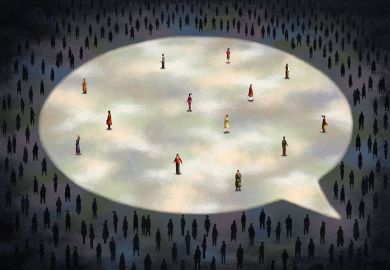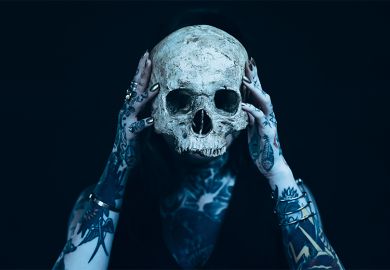In recent years there have been various large-scale histories of Italian literature published in Italy, while English readers have had at their disposal the single volume by E. H. Wilkins, which is reliable but mainly thematic and slanted towards the stu­dent of English literature, and the survey by J. H. Whitfield, updated by John Woodhouse in 1980, which is brief, stimulating and highly per­sonal. This new enterprise not only brings Eng­lish readers up to date, but offers us very sub­stantial coverage in one volume with essays by 19 specialists.
The task that the two skilled editors, Peter Brand and Lino Pertile, took on was a com­plex one. They rightly wanted to leave their contributors as much freedom as possible, but to delineate guidelines that gave a certain uniformity of approach. In their introduction they explain some of their choices: they decid­ed to mention only briefly the dialectal output and the works in Latin (apart from the 15th­-century humanists, as they produced in Latin most of the serious writing of the time). These exclusions are regrettable - in the case of Latin because they leave some authors incom­plete (but, fortunately, not Dante, whose De Vulgari Eloquentia, Monarchia and epistles are rightly discussed), and in the case of dialect because they lessen the importance of regional traditions and neglect certain strik­ing works such as La Veniexiana and poets such as Porta and Belli. But it is a decision that has its logic and is acceptable in the con­text of the whole work.
Certain inclusions, which would not have been possible without these restrictions, out­weigh the disadvantages. There are, for instance, in Letizia Panizza's splendid essay, sketches of cultural centres in the 15th century ‑ Florence, Rome, Venice. Naples and Fer­rara, with relevant individual details. Venice, for instance, was the starting point of Holy Land pilgrimages and this resulted in travel accounts giving a full description of the city. There is also a laudable concern not only with the literary aspects of the theatre, but also with stagecraft and improvisation, as in Richard Andrews's lively account of the com­media dell'arte .
It is well known that Italian literature has certain canons that are widely accepted, and this inevitably shapes the whole plan of the present enterprise. They create a tradition that is particularly rich and interdisciplinary, and the editors have allowed these qualities to emerge. Opera is a topic that has been includ­ed, in David Kimbell's three stimulating essays, from its early manifestations in the Renaissance to Calvino's collaboration with Berio (incidentally Berio does not appear in the index, nor does this reference to Calvino; editors, please note for the second edition). Political thinkers and philosophers such as Gramsci, Gentile and Croce are rightly given as much importance as more literary figures, for the influence they exercised on literature, and equally because of their crucial position in the culture of educated Italians. And natu­rally in a country where political and social factors had such an impact on artistic and lit­erary productions, what is normally provided as background material is given the appropri­ately prominent relief, whether one is talking about foreign invasions, the power of the church, the rise of fascism, civil war, terror­ism or the demise of communism. Also important right through the history of literature, in a country where most of the population spoke dialect, is the ever present questione della lin­gua , most relevant in the cinquecento , and admirably treated by Brian Richardson.
I looked at some of the contributions from the point of view of our university students
who might want information before starting a course, or might want to integrate what they had studied into a wider context, or of readers curious about specific authors or works. They would be very well served by Pertile's chapter on Dante, which gives a lucid account of the main features of the Commedia (his chapter comprises sections on the birth of a "comedy",composition and ear­ly diffusion, myth and history, the contrapas­so, Dante - the - character among the dead and politics and society). He distinguishes what is characteristic of one canticle from what is common to all three and gives an assessment of Dante's other works both as autonomous creations and in their relevance to the Com­media. As well as this, Pertile outlines what is known of Dante's life against the back­ground of the political events of the time and ends with a brief but very enlightening note on "Dante today", which sketches the main directions of Dante criticism in our own time.
With the above criterion in mind 1 also considered the sections on Boccaccio, Goldoni and Verga. Pamela Stewart's chapter on Boeccaccio gives a very good account of the histor­ical background of the "minor" works. When it comes to the Decameron she has a task similar to Pertile's in trying to convey a struc­ture that is both systematic and complex. She looks at setting and structure, thematic pat­terns, the storytellers and the "author". What one might lose in an account of this kind is the richness of Boccaccio's language and the remarkable appropriateness of style to speak­er and theme. Stewart is mindful of this and has a paragraph listing the main stylistic fea­tures, which if borne in mind when reading the Decameron will provide pointers for an analysis of Boccaccio's linguistic "expres­sivism" (to quote Vittore Branca). I took the example of Goldoni Uccause, apart from him, the 18th century is rarely studied in our departments, so he needs a full context.
In Franco Fido's distinguished chapter on the settecento the political, social, philosophi­cal and cultural setting provide the backdrop for the protagonists, from Metastasio to Alfieri. Goldoni is fully presented as a man of the theatre, theorist and playwright, with emphasis given to his plays in Venetian as well as to those in Italian. The section on Verga comes in Robert Dombroski's chapter on the literature of united Italy (1870 -1910), which displays skill in the combination of the social and political features of the new Italy with the concern of the writers, among the first being the veristi novelists. In his account of Verga's I Malavoglia Dombroski concen­trates on the "logic of the capitalist market economy", which, it is true, is a hidden dri­ving force, but he loses the humanity, the lyricism (no mention of La Longa, Mena and Alfio) and he also neglects the outstandingly original language and style Verga created.
There are many chapters that deserve special praise, from Steven Botterill's discussion of the minor writers of the trecento, to Paolo Chierchi's presentation of the seicento. To conclude I should like to mention the last chapter on contemporary Italy (since 1956). It must have posed problems since there has been such a varied and vigorous literary development in the past 40 years, comprising poetry, theatre and, above all, narrative, ranging from Primo Levi to Sciascia, Calvino and Sanvitale, Duranti and Tabucchi. It is invidious to have to spotlight certain authors who are still in mid - career, but this chapter is convincing in the presentation of even the most recent writers, such as Capriolo, Del Giudice and Lodoli. Michael Caesar offers us an excellent survey in which he groups writers without pigeon­holing them and manages to give the briefest of thematic accounts, choosing to concentrate on the conceptual and literary interest of the works under discussion. All in all this is an impressive volume, which one would like to see on the desks of individual readers as well as on the reference shelves of libraries.
Laura Lepschy is professor of Italian, University College London.
The Cambridge History of Italian Literature
Editor - Peter Brand and Lino Pertile
ISBN - 0 521 43492 0
Publisher - Cambridge University Press
Price - £70.00
Pages - 701



